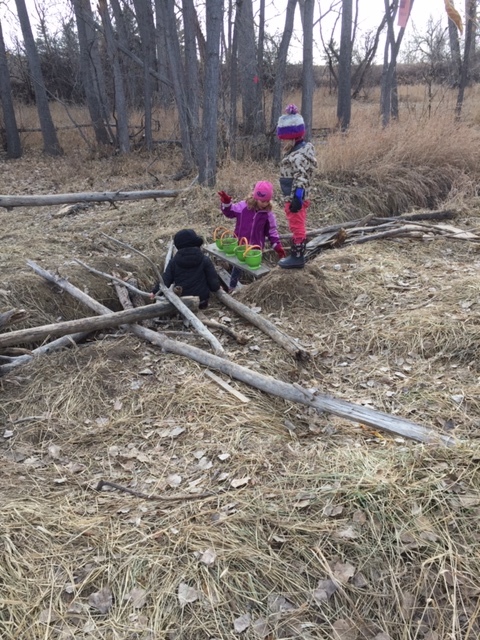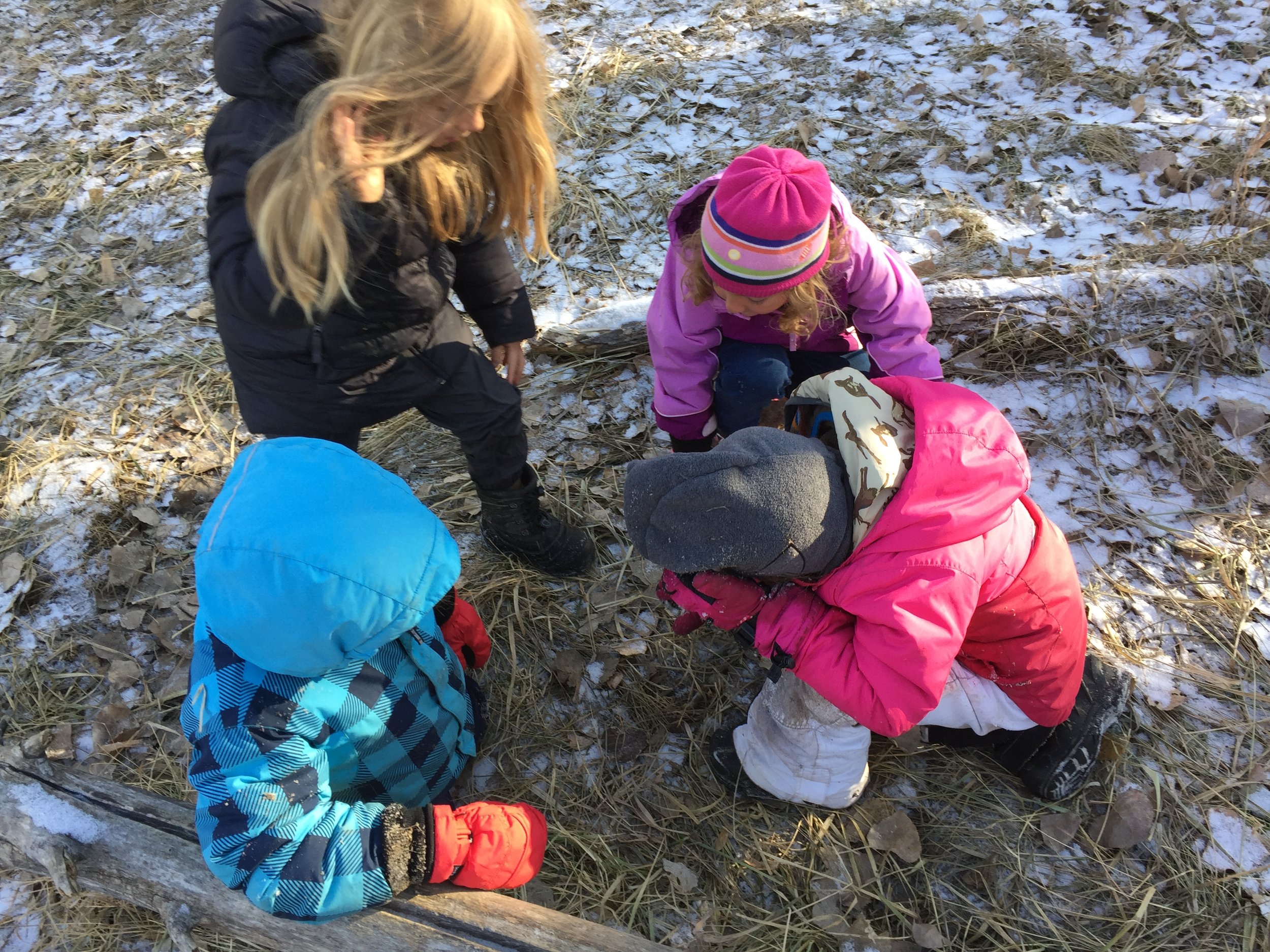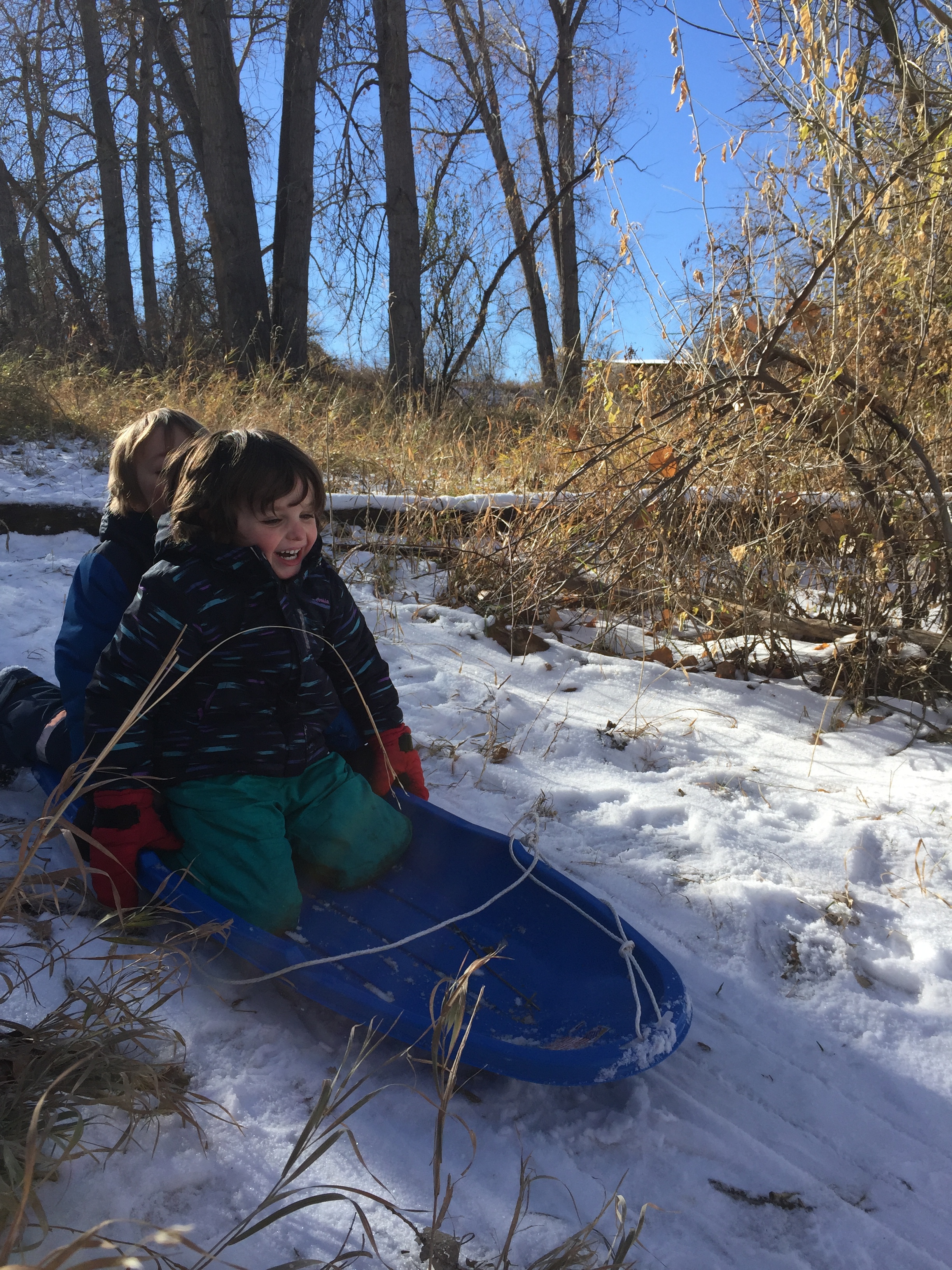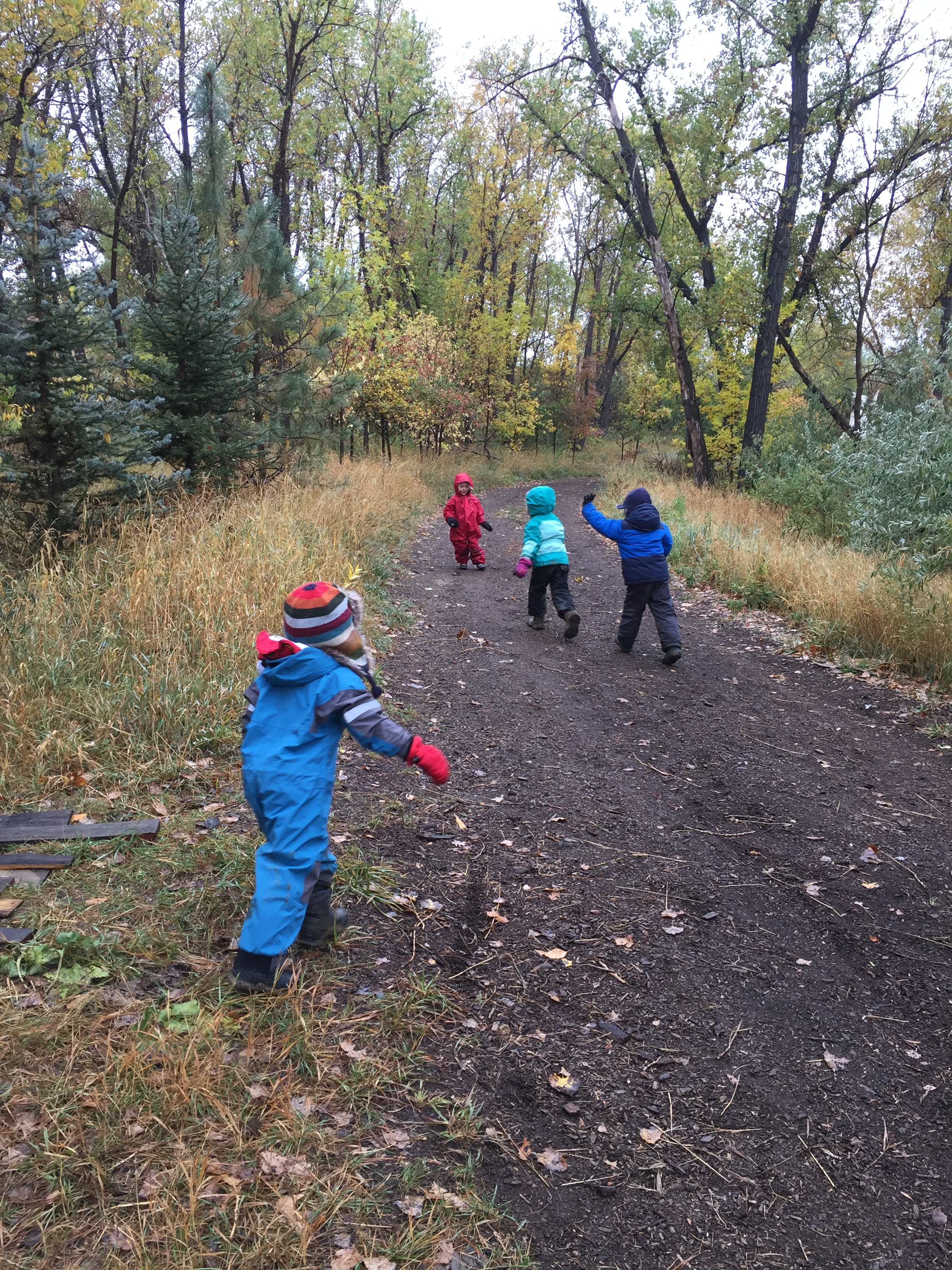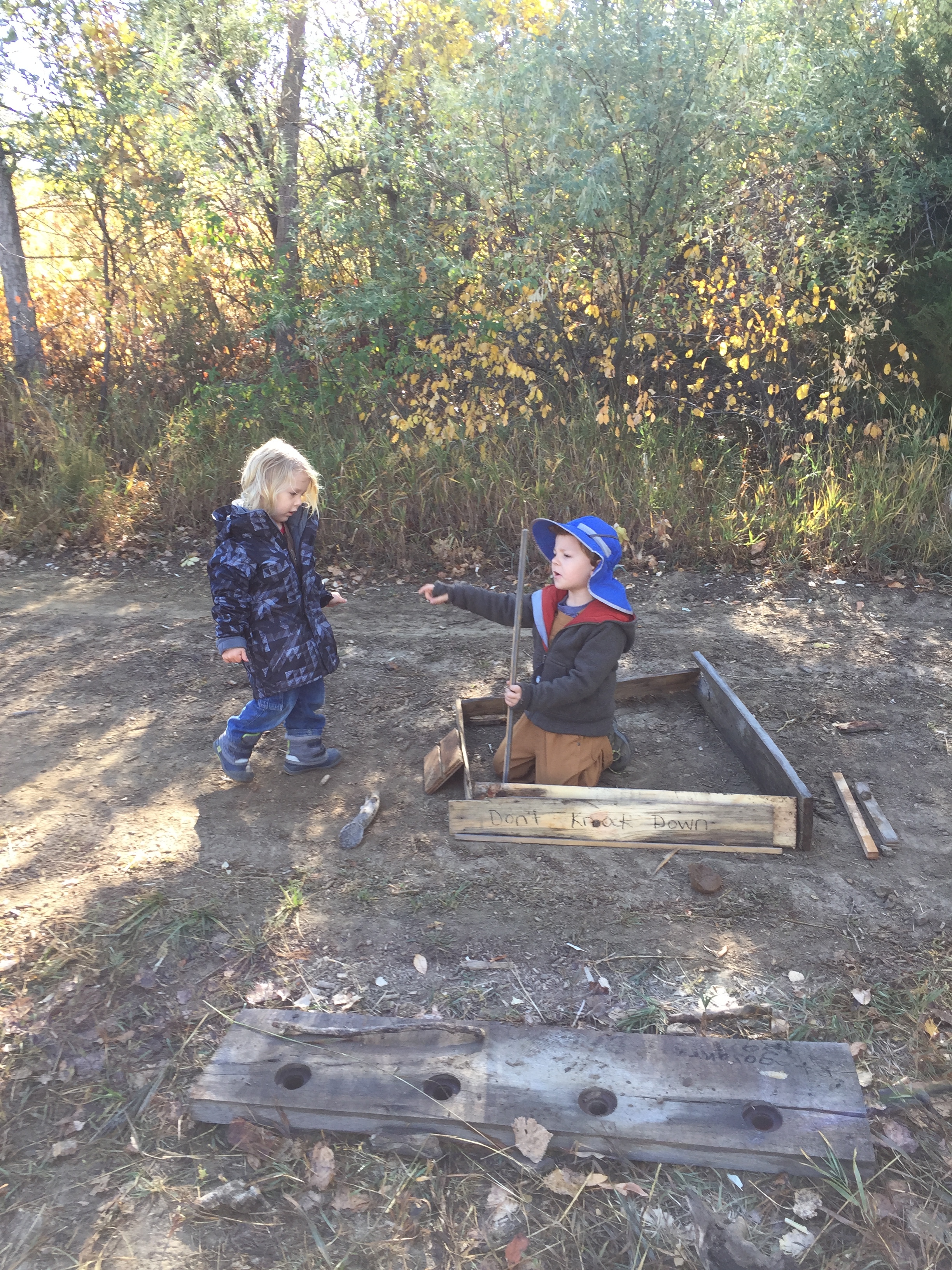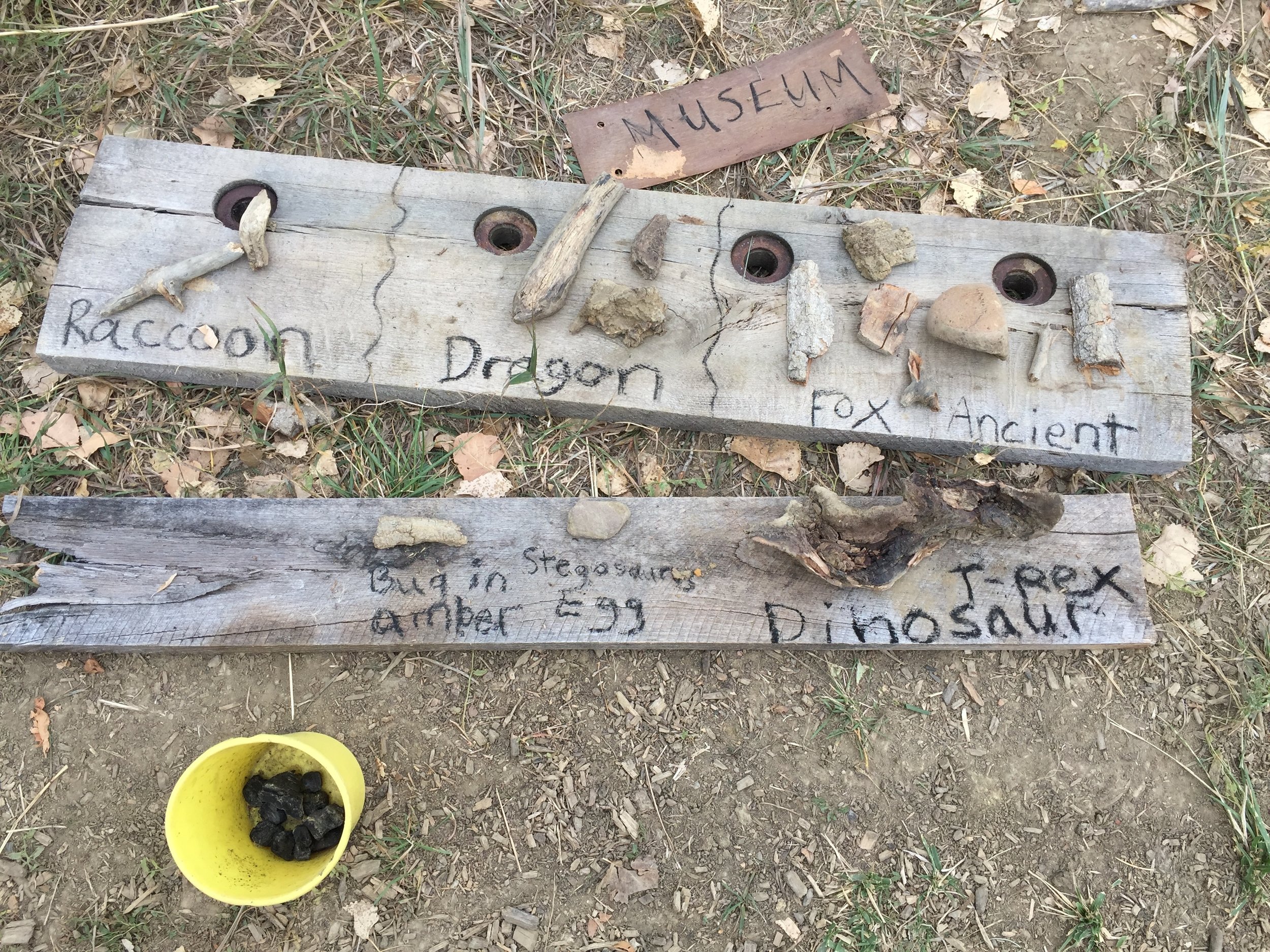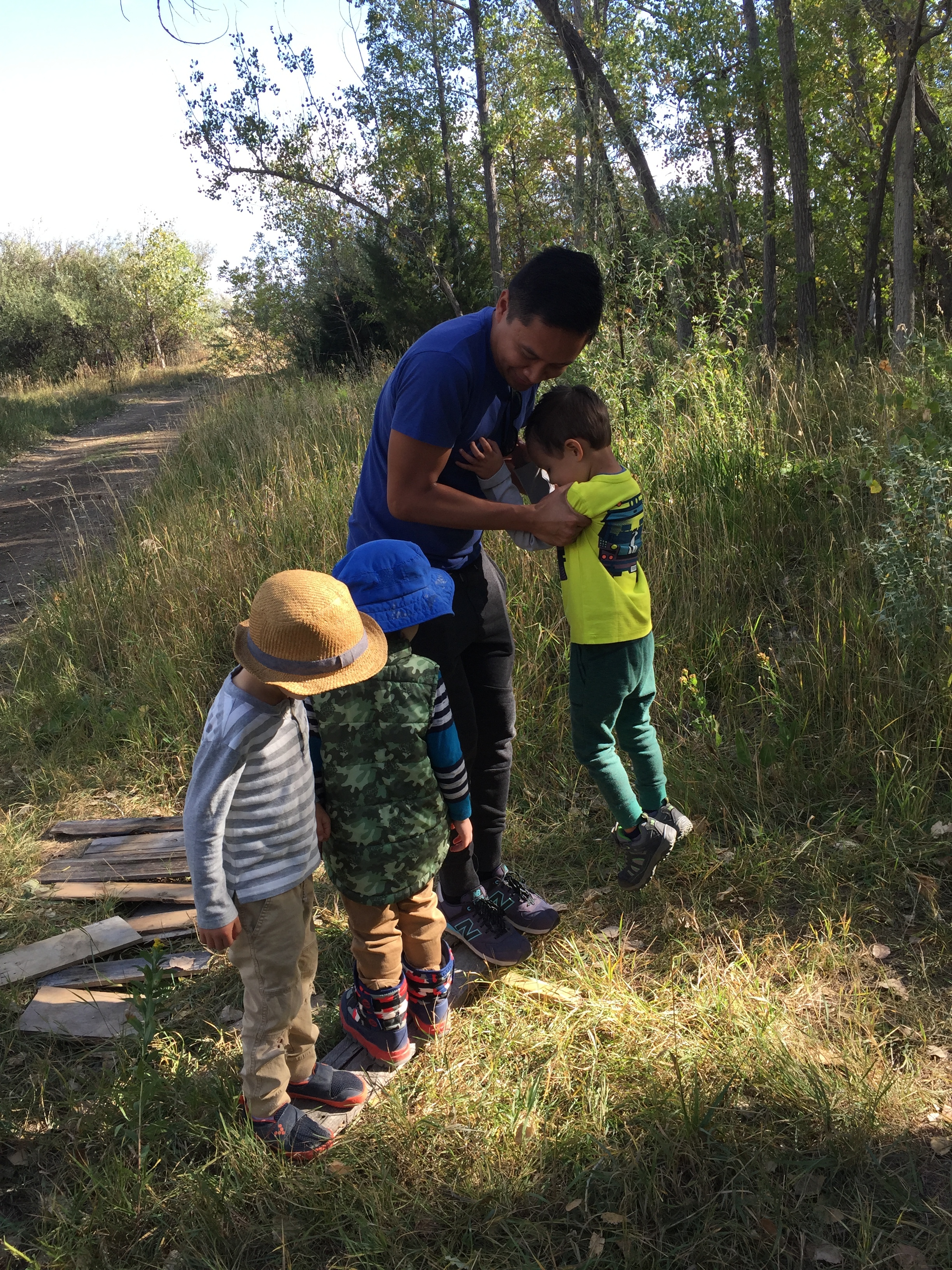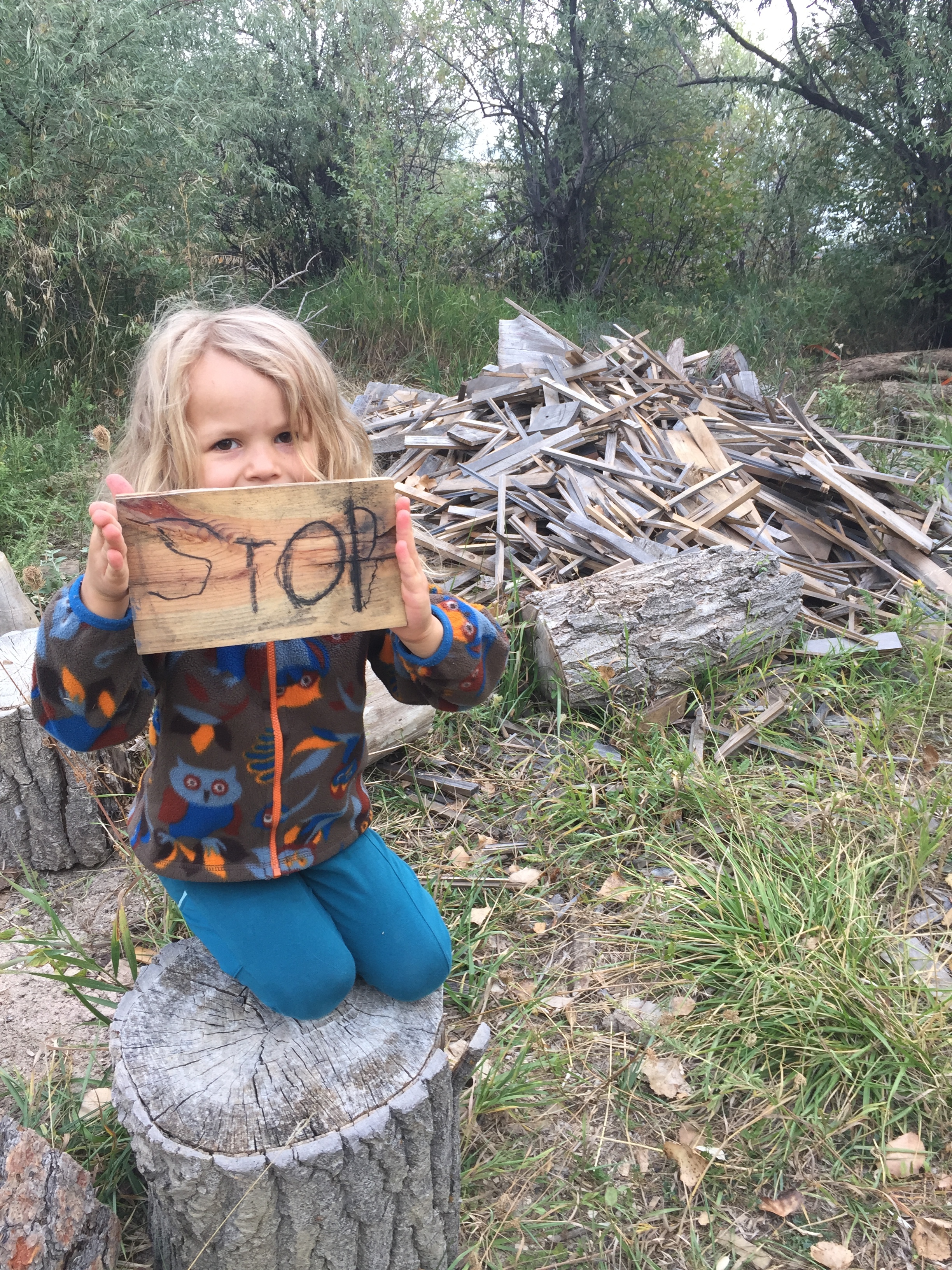We are now about halfway through our wonderful winter season here at Contrast Farm. As can be expected in a place with variable weather, we have had quite the sampler of precipitation along with sunny and snowy days, gusty winds here and there, and even sleet (our Friday group has shown a lot of grit on those days!) We have found that the best clothing for wet days is a rain suit layered over snow gear—that way the insulated pants and jackets do not become soaked-through and heavy with water. Thank you all for sending oodles of extra mittens—I told the children I should give myself a new name: Mrs. Mittens! We are becoming pretty adept at getting thumbs into their correct homes. Checking fingers and toes and making sure everyone is dry and warm is a big part of our winter days. We also recommend taking a look to see if your child’s boots are still fitting properly—they should not fit snugly, because a little extra room allows for wool socks and that lovely pocket of warm air that keeps wiggling toes warmer.
These daring kids are taking appropriate risks by experimenting with building a jump on our very gentle sledding slope. They soon discovered two things: it is hard to aim a sled toward a narrow target and our slope is too gradual to build up enough speed. Regardless, the kids spent a good deal of time on these discoveries and the excitement of the project created an overlap between two interest-groups when our dramatic play kiddos gravitated toward the action.
Winter is a time when the connection between ourselves and the forest become most apparent. The weather plays an immense role in how the children play and interact. On the days when the sleet was falling on our forest, the children instinctively knew to keep themselves moving. On those days, our older children ran and leaped and chased each other. On warm days, we have seen the children slow down and take time to have long conversations or stay in one place to work on a project. Because of the variation in weather, our days don’t flow in the same way they did in autumn. Themes that the children are interested in weave in and out of our days rather than on a weekly continuum. For example, in our warmer months the children were heavily focused on building. They had their hands free from mittens and the ground and lumber were soft and workable. These projects haven’t disappeared, however…when we have those warm winter days the kids will get right back to fixing bridges and dens, creating obstacle courses, and adding to the “treehouse.”
On warm days, it isn’t usual to see the children sit for a while and converse. We love that our program gives the children ample time and space to connect with each other.
Part of what we teachers do at Wee Folk is document the children’s interests and where those interests lead us. One example of a piece of emergent curriculum we are tracking (pun intended) is their experience with animal footprints. Earlier in the year, the children saw evidence of the creatures who live in our forest around our pond. There were coyote and racoon prints along the muddy shore. Once the snow appeared, we saw even more of a snapshot of what goes on when we aren’t around—tracks in tipi, new tracks. “The animals have a party here at night!” the children often exclaim. We began to tell stories of what the animals are up to when we are sleeping. The children then began adding tracks into dramatic play, following each other and creating reproductions of foot patterns. After that, one of the older children noticed that the foot patterns tell more about the animals—”animals that eat grass have hooves, and predator feet look like flowers!” Ms. Jen is currently working on creating a class book about the forest animals inspired by none other than the tracks and the children’s observations!
Nature invites inquiry: these children wanted to melt some ice, and wondered if piling hay on top would help it melt faster. With a little help in the form of a question—“how will you know if it melted faster?”—they soon had a controlled experiment. One of our dear “big kids” was excited to label the experiment with a piece of charcoal and even tallied votes for their hypotheses. The kids concluded that the hay made the ice last longer and some came up with the reason: “I think the ice kept the cold air trapped!” Hooray! We have invented a primitive freezer.
We would also like to introduce you all to our newest animal friends at Contrast Farm—the four goats that now split their time between the farmyard and Woodchip Land. When the goats come to Woodchip Land, we enjoy visiting them and giving them their lunches—mostly cabbage, lettuce, and carrots. The goats have gotten used to the children feeding them and they are quickly becoming friends. The goats have wonderful names: Miss Pickles, Thistle, Maisy, and Celeste. The children often pretend to be these goats, which is the surest sign of a child’s interest and evidence of their understanding.
Farmer Heidi walking the Maisy, Miss Pickles and Thistle to Woodchip Land. Celeste was adopted after this photo was taken…we will hopefully get a picture of beautiful Celeste soon.
These children are pretending to be Maisy, Miss Pickles, and Thistle. In this “episode” they are fleeing from a farm and striking out to seek their fortune. The stories the kids weave in dramatic play are truly fantastic!
Thank you, dear forest families, for your continued support and for valuing this special time outdoors. We truly treasure your children and all that they bring to our community.









